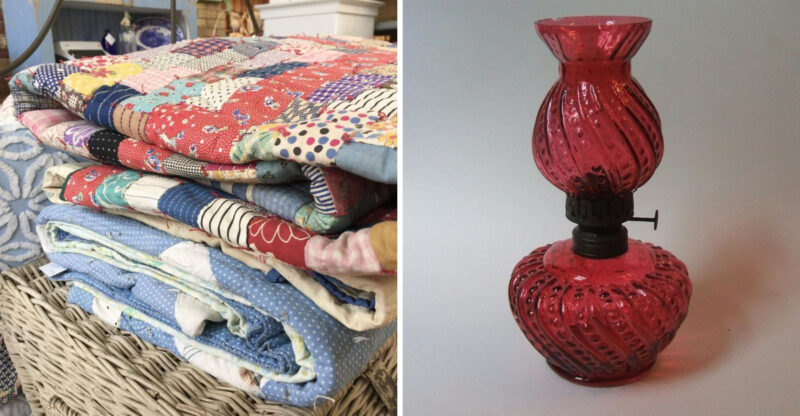14 Sustainable Home Products That Could Support Eco-Friendly Living

Our everyday choices at home can make a real difference for the planet. Switching to eco-friendly products helps cut down on waste, saves energy, and reduces harmful chemicals in our environment. These sustainable alternatives not only help protect nature but often save money in the long run too.
This article is for general informational purposes only. Product features, availability, and pricing may change over time and by location. Always review specifications and consult professionals before making significant purchasing or installation decisions.
1. Energy-Efficient Appliances
Look for the ENERGY STAR label when shopping for new appliances. These certified products use less electricity than standard models while delivering the same performance.
A typical ENERGY STAR refrigerator uses about 9% less energy, while certified washing machines use 25% less energy and 33% less water. Over time, these savings add up for both your wallet and the environment.
2. Water-Saving Fixtures
Replacing old faucets and toilets with water-efficient versions can reduce household water consumption. Modern low-flow fixtures maintain good water pressure while using a fraction of the water.
WaterSense-labeled products must meet EPA guidelines for efficiency and performance. A family of four could save nearly 16,000 gallons annually just by installing these simple fixtures throughout their home.
3. Solar-Powered Lighting
Garden pathways glow softly with solar stake lights that charge during daylight hours. These lights require zero electricity from the grid and automatically illuminate when darkness falls.
Beyond outdoor options, portable solar lamps and chargers provide emergency lighting during power outages. Many modern designs look stylish while harnessing free energy from the sun, reducing reliance on disposable batteries or electrical cords.
4. Recycled And Upcycled Furniture
Furniture crafted from reclaimed wood, recycled metal, or repurposed materials repurposes materials that might otherwise end up in landfills. Each piece tells a unique story through its distinctive character and patina.
Shopping secondhand or choosing items made from recycled materials significantly reduces environmental impact. Many contemporary designers now specialize in creating beautiful, durable furniture while maintaining eco-friendly production methods that minimize waste and pollution.
5. Eco-Friendly Paints And Finishes
Traditional paints release harmful volatile organic compounds (VOCs) into your home for years after application. Low-VOC and zero-VOC alternatives provide beautiful color without the chemical emissions.
Natural paints made from ingredients like clay, milk protein, and plant oils offer excellent coverage while being biodegradable. These healthier options reduce indoor air pollution and minimize environmental impact during both production and disposal.
6. Organic Bedding And Textiles
Conventional cotton farming uses enormous amounts of pesticides and water. Organic cotton, hemp, and bamboo bedding alternatives grow with significantly fewer resources and harmful chemicals.
Beyond environmental benefits, organic textiles feel wonderful against your skin. Look for GOTS (Global Organic Textile Standard) certification to ensure the entire production process meets strict ecological and social criteria, from farm field to finished product.
7. Sustainable Flooring Options
Cork flooring comes from tree bark that regrows, making it a truly renewable resource. Bamboo grows incredibly fast – reaching harvest maturity in just 3-5 years compared to hardwoods that take decades.
Reclaimed wood flooring saves old-growth timber from demolition waste while adding character to your home. For kitchens and bathrooms, consider linoleum made from natural materials like linseed oil, pine resin, and wood flour – all biodegradable.
8. Smart Home Energy Monitors
Small wireless devices track electricity usage throughout your home in real-time. The accompanying smartphone apps reveal which appliances consume the most power and when energy waste occurs.
Armed with this knowledge, some households may reduce electricity use by 10-15% simply by changing habits and addressing inefficiencies. Some advanced systems can even automatically power down devices during peak rate times or when rooms are unoccupied.
9. Composting Systems
Kitchen scraps transform into garden gold with the right composting setup. Counter-top collectors store food waste until it’s ready for the main bin outdoors or an under-sink vermicomposting system. Modern composters come in various designs to fit different living situations.
Even apartment dwellers can use odorless bokashi systems that ferment scraps before they’re buried in potted plants. Food waste in landfills creates methane – composting prevents this potent greenhouse gas.
10. Reusable Kitchen Products
Silicone food storage bags replace single-use plastic with durable, washable alternatives that last for years. Beeswax wraps mold around containers or food with just the warmth of your hands, creating a breathable seal.
Swedish dishcloths absorb 20 times their weight in liquid and replace up to 17 rolls of paper towels before composting at end-of-life. These simple swaps may significantly reduce household waste while often performing better than their disposable counterparts.
11. Indoor Plants For Air Quality
NASA research indicates that certain houseplants may help filter indoor air pollutants. Spider plants, peace lilies, and snake plants work tirelessly to absorb toxins while releasing fresh oxygen. Beyond air purification, indoor greenery may help reduce stress and improve mood.
Place plants strategically throughout your home, focusing on bedrooms and areas with electronics. Living air purifiers require only sunlight and occasional watering – no filters to replace or electricity needed.
12. Low-Flow Showerheads
Modern aerating showerheads mix air with water to create the sensation of high pressure while using significantly less water. The technology has advanced dramatically from the disappointing low-flow options of decades past.
A family of four could save nearly 28,000 gallons annually by switching to WaterSense-certified showerheads. Beyond water conservation, you’ll notice savings on water heating costs too – less water means less energy needed to heat it.
13. Electric Or Hybrid Home Tools
Battery-powered lawn mowers run cleaner and quieter than gas models. A single gas mower produces as much pollution in one hour as 40 newer cars – making electric alternatives better for air quality.
Beyond environmental benefits, electric tools start instantly with the push of a button. No more wrestling with pull cords or mixing fuel. Modern lithium-ion batteries provide enough runtime for most residential yards while eliminating emissions.
14. Green Cleaning Products
Plant-based cleaning formulas effectively tackle household dirt without harsh chemicals. Many brands now create concentrated solutions in recyclable containers, reducing plastic waste and transportation emissions.
For the ultimate eco-friendly approach, simple ingredients like vinegar, baking soda, and essential oils clean most surfaces beautifully. DIY cleaners eliminate packaging waste entirely while keeping harmful substances away from waterways and your family’s skin.






